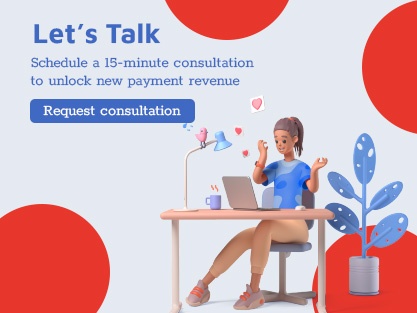Your choice: E-commerce Payment Gateway or E-commerce Payment Processor?
Whether you’re an ISV creating an e-commerce solution for merchants or a merchant determining your online payment process, choosing how to handle payments can be complicated.
One of the first puzzles is the question of e-commerce payment processors versus e-commerce payment gateways.
They both serve an important purpose, so … do you need both?
To answer that question, you first need to understand the role each plays in the payment process.
E-commerce Payment Processors and E-commerce Payment Gateways: What’s the Difference?
E-commerce payment gateways and payment processors serve complementary purposes and are both important in the payment process.
E-commerce Payment Processors Transmit Transaction Data
An e-commerce payment processor transmits the details of customer transactions between issuing and acquiring banks for online, in-person or mobile app transactions. They handle authorizations on the front end and settlements on the back end.
Payment processors are usually channel- and device-specific, meaning there are payment processors for credit card transactions, digital wallets and other payment types. For in-store transactions, payment processors often provide the devices and other equipment used to accept credit card payments.
E-commerce Payment Gateways Manage Transaction Data
An e-commerce payment gateway manages transaction data by capturing payment details on a merchant’s website, a hosted payment page or a mobile app and sending it to the payment processor.
E-commerce payment gateways also communicate transaction approvals or declines.
So, back to our original question: Do you need e-commerce payment processors and an e-commerce payment gateway?
The short answer is no … if you don’t mind some extra work. The long answer is that merchants have to work with at least one payment processor. However, because customers now expect choice and the ability to select from many payment methods, it’s rare for a merchant to work with only one payment processor.
That can present a number of challenges—which an e-commerce payment gateway can solve.
How an E-commerce Payment Gateway Adds Value
We’ve established that merchants need to offer a selection of payment options to their customers, from traditional credit cards to digital wallets like Apple Pay, Google Pay and Amazon Pay.
Each of these payment methods is represented by one or more payment processors. This means managing multiple relationships, integrations, payloads and data files for reporting.
An e-commerce payment gateway can handle all of that for you. To make sure you get the most value out of the arrangement, here’s what to look for:
An E-commerce Payment Gateway Can Make Integrations Easy
Integrations shouldn’t be difficult, especially when it comes to the most common payment processors and shopping carts. Why spend developer time on something so basic when an e-commerce payment gateway offers APIs to do just that?
An e-commerce payment gateway creates frictionless customer experiences by offering APIs for common payment processors and shopping carts like Shopify, WooCommerce , OpenCart and Adobe Commerce (formerly Magento).
Pro-tip: Make sure the gateway you choose is processor-agnostic. That makes your payment solution the most flexible and adaptable to payments of the future.
At Worldnet Payments, we take integrations a step further with our RESTful API, which can be used to easily and quickly build a custom enterprise payment solution with functionality that isn’t available in any payment processors or even payment solutions.
An E-commerce Payment Gateway Can Be Omnichannel
Another feature to look for in a payment gateway is whether it allows for omnichannel payments. Until recently, e-commerce payment gateways have been limited to online transactions, but that has changed.
Many modern payment gateways can manage payment details from multiple channels and devices to deliver an omnichannel experience that includes:
- CRM and ERP integrations.
- Card-present swiped, dipped or tapped transactions.
- Mobile app transactions.
- Digital wallet transactions.
Worldnet Payments not only manages payments from multiple channels, but we also offer tokenization with our Secure Token functionality that lets you digitize a single card into several independent digital payment means through tokens. In other words, a single card across all payment channels—in-store, online and on a mobile app.
That type of centralized data is another important feature you’ll find with a payment gateway.
An E-commerce Payment Gateway Can Centralize Reporting
When you work with an e-commerce payment gateway, all your payment processor data is transmitted through a single channel … making the payments gateway a single source of truth for all transactions.
Instead of having to pull and standardize disparate raw data files, a payment gateway can compile all data into one database for fraud analysis, returns and refunds, and payment reporting.
That’s not all a payment gateway should do.
An E-commerce Payment Gateway Can Make Checkout Seamless
While it’s not a feature offered by every e-commerce payment gateway, customizable and hosted payment pages can up the ante on your site’s checkout experience—something that has become extremely important for today’s consumer.
Some important questions to ask about payment pages include:
- Does it support international and cross-border e-commerce by accepting multiple currencies?
- Does it support one-time payments and fully automated recurring payments for subscription-based websites?
- Does it offer a WYSIWYG interface to customize UX and CX on the page?
- Can the payment page be customized to look like a page on our website?
An E-commerce Payment Gateway Must Offer Multiple Options for Customer Support
While a great e-commerce payment gateway should have plug-and-play integrations, it shouldn’t limit you to static support pages, automated messages and endless hold times waiting for help.
Yes, you should have access to an online knowledge base for frequently asked and easily answered questions. But you also need to work with a team of experts who have extensive experience troubleshooting integrations, devices, payment types, encryption and security.
They should know the answers to your questions and prompt you with questions you didn’t think to ask. And they should be able to provide use cases to consider as you design your payment solution.
“Our goal is always to make the payment process as simple as possible. The most effective way to do that is to listen and find out what problem an ISV or merchant is trying to solve.
“Usually, the problem isn’t actually a problem. It’s a point of confusion. That’s why we spend so much time listening. It helps us design a simple solution faster, no matter how large or complex the business is.”
 Simon Cruise, Chief Technology Officer
Simon Cruise, Chief Technology Officer
Whether it’s through our technology or our customer service, Worldnet Payments offers a level of simplification that helps clients create and implement the best payment solution with the most functionality. Our expertise and experience across industries is unmatched.
Let us help you build a solution for the future of payments.


